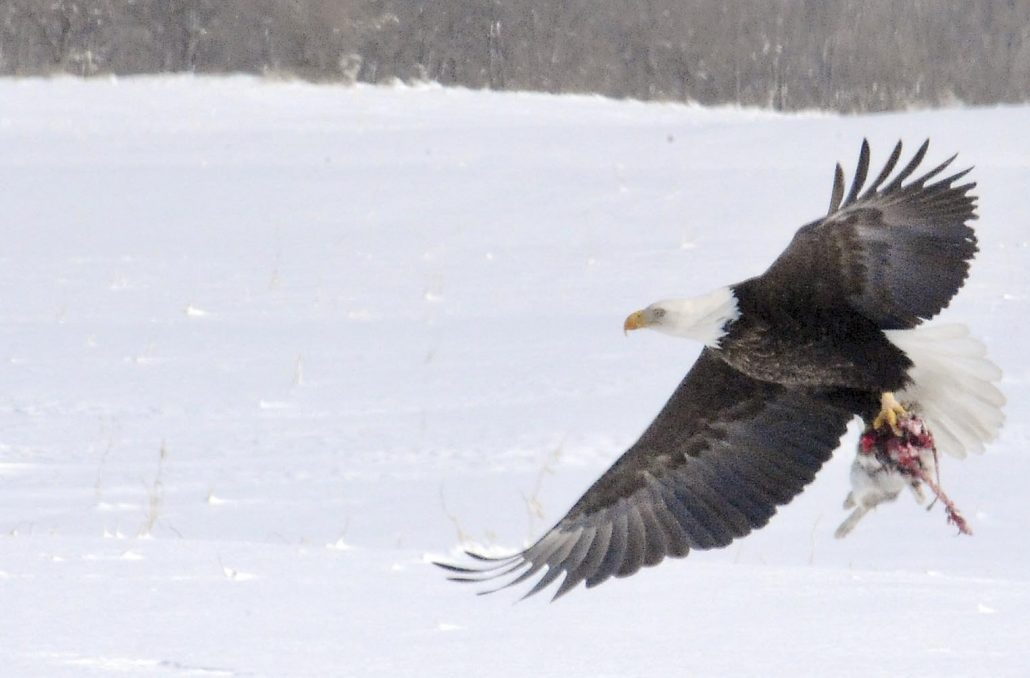
By Per Peterson
If you think you’re seeing more bald eagles around, you are.
Thanks to a change in attitude toward the species and federal programs designed to protect them, the eagle population in the U.S. and in Minnesota is thriving.
“Eagles have benefited from a number of programs over the past 30 to 40 years,” said Carrol Henderson, head of the DNR’s non-game program. There is better promotion of the fact that eagles are protected by state and federal laws that prohibit shooting next to a nest site. It used to be that people routinely shot raptors at the nest site.”
According to the DNR, the bald eagle population has grown to well above population goals set in the 1970s. Their population continues to thrive despite threats to eagle productivity and nest success.
Henderson said a law passed in the 1930s actually removed all protection of raptors from humans, who looked at the birds as “public enemies,” Henderson said. “I’m not sure when that rule was removed, but it shows how far we’ve come since then.”
Henderson said the public’s attitude toward raptors changed dramatically decades ago to the point where today, people come to the DNR to inquire about what they can do to foster their protection and help keep the population growing.
The other thing that has helped raptors, and eagles in particular, is their underestimated tolerance to a wide range of habitat. The belief that eagles can only thrive somewhere in the northern woods of Minnesota has been debunked, Henderson said. There hasn’t been a scientific study of the eagle population in more than a decade, he said, but this spring the U.S. Fish and Wildlife Service will be doing an aerial survey to come up with a new estimate of the eagle population.
Henderson said eagles are more adaptable then they’ve been given credit for. They can even withstand the heavy, wet snow that has fallen recently as long as they can find roadkill to eat or are able to find prey to feast on.
